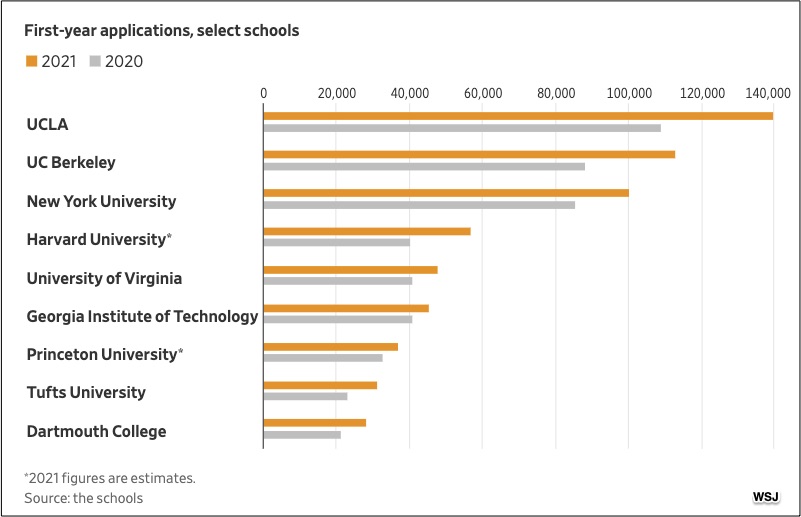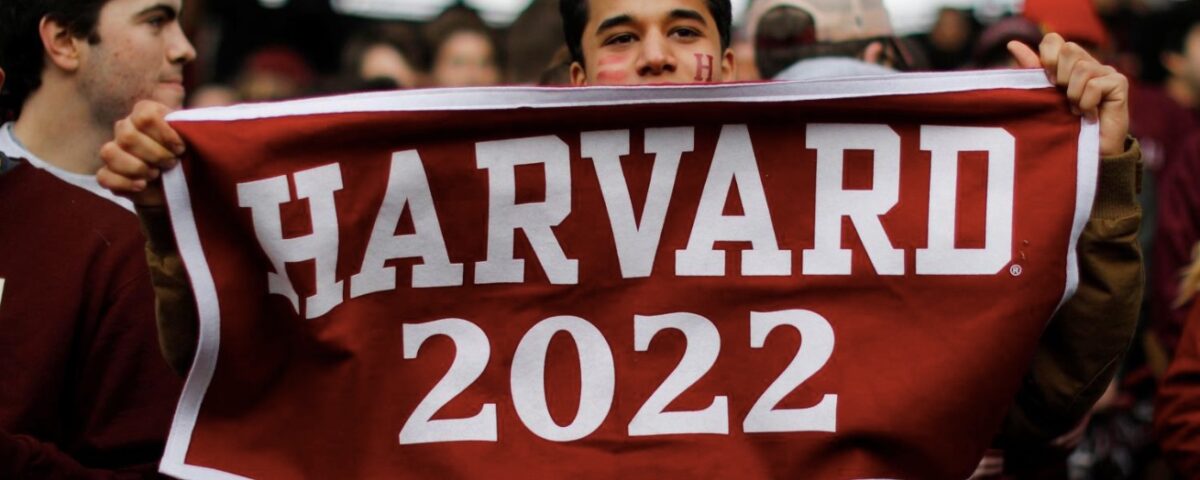
What We Should Know About 58.3 degrees
March 18, 2021
Learn With Elaine: How Subway Competes
March 19, 2021Our story starts in 1926, the year the SAT was born. Designed to measure aptitude, it was supposed to let colleges assess applicants who did not have an elite background. Jumping ahead to now, our story ends with schools making the test optional because of the coronavirus. In the middle though, we have the SAT becoming an increasingly important metric for getting into and defining a college, especially because of how U.S. News and World Report ranks schools.
Where are we going? To an economic look at the impact of an optional SAT on college applications.
College Applications
This year, more than 400 colleges have said the SAT and ACT admissions tests are optional. Some have taken a multi-year pause or entirely prohibited them. Last August 200,000 students backed out of taking the test because of closed testing sites and others with reduced capacity. In California, a 2020 court decision said that the University of California had to be test blind.
Explaining the new dynamic, The Wall Street Journal tells us that the gates of the country’s top selective schools will no longer be blocked by standardized tests. As a result, thousands more students think getting in is worth a shot. Students who took the test are submitting scores only where they will be helpful.
Last year, at 2,037, Harvard’s 2020 admission rate was 5.2 percent. This year, exceeding 57,000, Harvard reported a 42 percent increase in applications that I assume will create a far lower admission rate. Also seeing a deluge, Yale, Columbia, and Stanford had to delay their decision date.
Elsewhere, below, you can see the application surge:

Fo these schools and many others, it all adds up to a slew of questions that admissions offices have to answer about entry criteria (and exhaustion according to the University of Virginia). Through Zoom interviews and new admissions metrics, Covid could be an equalizer for rural and minority students.. Still though, at the University of Pennsylvania, three quarters of the students who had an early decision acceptance took the SAT.
Our Bottom Line: Friction
Just like physics, friction slows economic transactions. My favorite example of friction is the CVS message to callers. Making it tough to access a person, you wait for a hierarchy of instructions until the last one says you can talk with the pharmacy. That friction diminishes the incentive to speak with a human being.
Completely the opposite, friction was reduced by an optional SAT and ACT. College applicants neither had to prepare for a test nor take it. They also knew that they could be judged by a new set of criteria. Consequently elite schools received many more applications.
My sources and more: Together, WSJ and The Atlantic conveyed the potential impact of changing the SAT college admissions requirement. Please note that a part of “Our Bottom Line” was in a previous econlife post.
![econlifelogotrademarkedwebsitelogo[1]](/wp-content/uploads/2024/05/econlifelogotrademarkedwebsitelogo1.png#100878)



